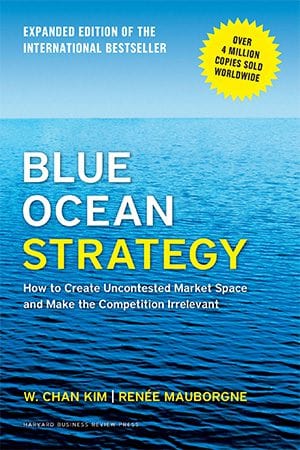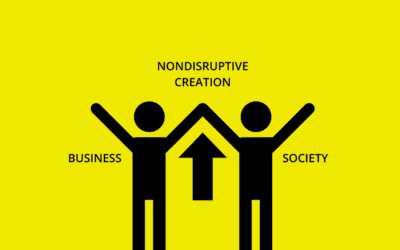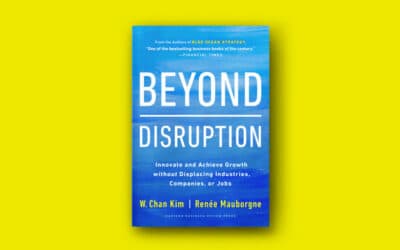Excerpts from Chan Kim & Renée Mauborgne’s Blue Ocean Strategy (2015)
Once a company has developed a blue ocean strategy with a profitable business model, it must execute it. The challenge of execution exists, of course, for any strategy.
Companies, like individuals, often have a tough time translating thought into action whether in red or blue oceans.
But compared with red ocean strategy, blue ocean strategy represents a significant departure from the status quo. It hinges on a shift from convergence to divergence in value curves at lower costs. That raises the execution bar.
Four key organizational hurdles to strategy execution
Managers face four organizational hurdles to strategy execution. One is cognitive: waking employees up to the need for a strategic shift. Red oceans may not be the paths to future profitable growth, but they feel comfortable to people and may have even served an organization well until now, so why rock the boat?
The second hurdle is limited resources. The greater the shift in strategy, the greater it is assumed are the resources needed to execute it. But resources are being cut, and not raised, in many organizations today.
Third is motivation. How do you motivate key players to move fast and tenaciously to carry out a break from the status quo? That will take years, and managers don’t have that kind of time.
The final hurdle is politics. How to overcome opposition from individuals with powerful vested interests who fear a loss of position or statute as a result of the strategic shift?
To overcome these hurdles, companies must abandon perceived wisdom in effecting change.
Conventional wisdom asserts that the greater the change, the greater the resources and time you will need to bring about results.
Instead, you need to flip conventional wisdom on its head in a way that allows you to overcome these four hurdles fast and at low cost while winning employees’ backing in executing a break from the status quo.
Let’s look at each of these hurdles in more depth and assess ways to overcome them.
1. Break Through the Cognitive Hurdle
In many turnarounds and corporate transformations, the hardest battle is simply to make people aware of the need for a strategic shift and to agree on its causes. Most CEOs will try to make the case for change simply by pointing to the numbers and insisting that the company set and achieve better results.
But as we all know, figures can be manipulated. Insisting on stretch goals encourages abuse in the budgetary process. This, in turn, creates hostility and suspicion between the various parts of an organization. Even when the numbers are not manipulated, they can mislead.
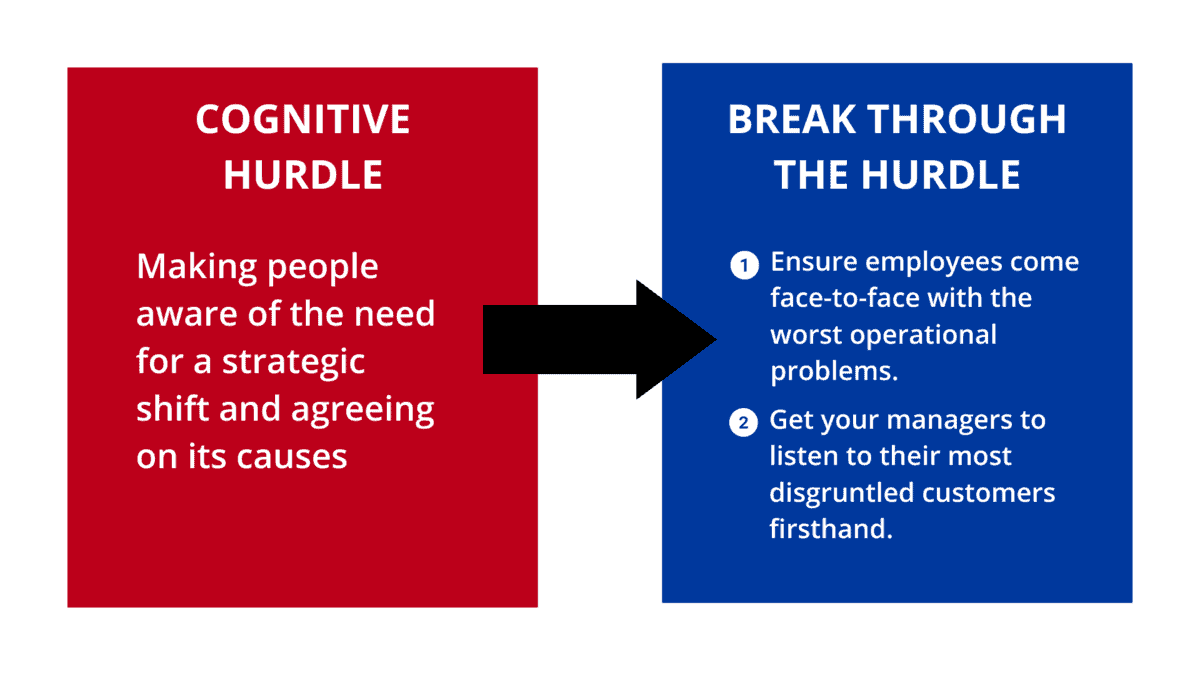
1. Ensure employees come face-to-face with the worst operational problems. Don’t let top brass, middle brass, or any brass hypothesize about reality. Numbers are disputable and uninspiring, but coming face-to-face with poor performance is shocking and inescapable, but actionable.
2. Get your managers to listen to their most disgruntled customers firsthand. Don’t rely on market surveys. To what extent does your top team actively observe the market firsthand and meet with your most disgruntled customers to hear their concerns? There is no substitute for meeting and listening to dissatisfied customers directly.
2. Jump the Resource Hurdle
After people in an organization accept the need for a strategic shift and more or less agree on the contours of the new strategy, most leaders are faced with the stark reality of limited resources. Do they have the money to spend on the necessary changes? Acquiring more resources is often a long, politically charged process. So how do you get an organization to execute a strategic shift with fewer resources?
Instead of focusing on getting more resources, concentrate on multiplying the value of the resources you have. When it comes to scarce resources, there are three factors of disproportionate influence that you can leverage to dramatically free resources, on the one hand, and multiply the value of resources, on the other. These are hot spots, cold spots, and horse-trading.
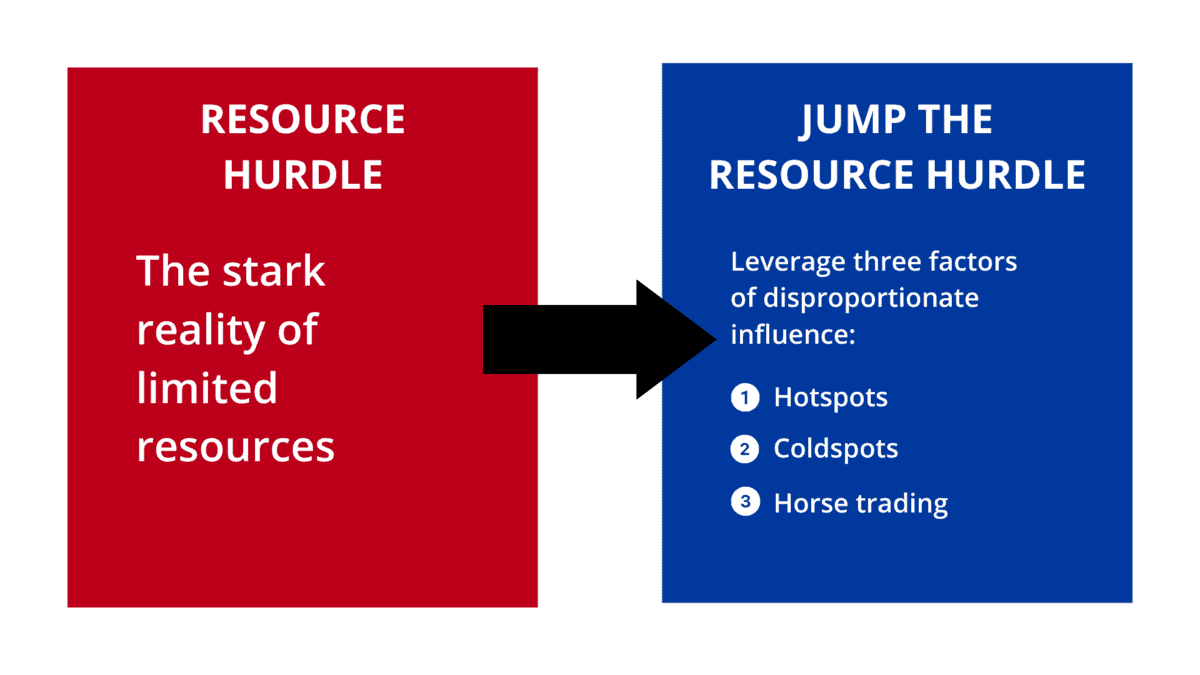
Hot spots, cold spots, and horse-trading
Hot spots are activities that have low resource input but high potential performance gains. In contrast, cold spots are activities that have high resource input but low-performance impact. In every organization, hot spots and cold spots typically abound. Horse trading involves trading your unit’s excess resources in one area for another unit’s excess resources to fill remaining resource gaps. By learning to use their current resources right, companies often find they can tip the resource hurdle outright.
What actions consume your greatest resources but have scant performance impact? Conversely, what activities have the greatest performance impact but are resource-starved? When the questions are framed in this way, you can rapidly gain insight into freeing up low-return resources and redirecting them to high-impact areas. In this way, both lower costs and higher value are simultaneously pursued and achieved.
3. Jump the Motivational Hurdle
To successfully execute blue ocean strategy, you must alert employees to the need for a strategic shift and identify how it can be achieved with limited resources. For a new strategy to become a movement, people must not only recognize what needs to be done, but they must also act on that insight in a sustained and meaningful way.
How can you motivate the mass of employees fast and at low cost? When most business leaders want to break from the status quo and transform their organizations, they issue grand strategic visions and turn to massive top-down mobilization initiatives. They act on the assumption that to create massive reactions, proportionate massive actions are required. But this is often a cumbersome, expensive, and time-consuming process, given the wide variety of motivational needs in most large companies. And overarching strategic visions often inspire lip service instead of the intended action.
Is there another way? Instead of diffusing change efforts widely, follow a reverse course and seek massive concentration. Focus on three factors of disproportionate influence in motivating employees: kingpins, fishbowl management, and atomization.
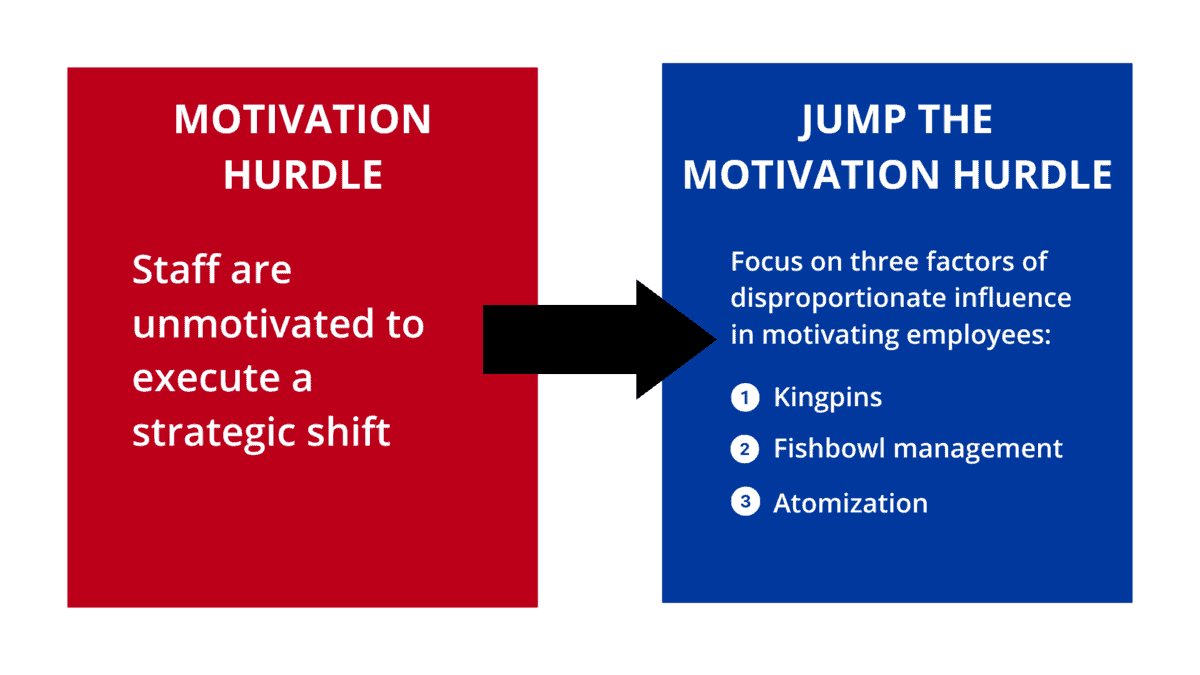
Zoom in on kingpins
Kingpins are the key influencers in the organization. These are people inside the organization who are natural leaders, who are well respected and persuasive, or who have an ability to unlock or block access to key resources. As with kingpins in bowling, when you hit them straight on, all the other pins come toppling down. This frees an organization from tackling everyone, and yet in the end everyone is touched and changed. And because in most organizations there are a relatively small number of key influencers, who tend to share common problems and concerns, it is relatively easy to identify and motivate them.
Apply fishbowl management
At the heart of motivating the kingpins in a sustained and meaningful way is to shine a spotlight on their actions in a repeated and highly visible way. This is what we refer to as fishbowl management, where kingpins’ actions and inaction are made as transparent to others as are fish in a bowl of water. By placing kingpins in a fish- bowl in this way you greatly raise the stakes of inaction. Light is shined on who is lagging behind, and a fair stage is set for rapid change agents to shine. For fishbowl management to work it must be based on transparency, inclusion, and fair process.
Atomize to get the organization to change itself
Atomization relates to the framing of the strategic challenge. Unless people believe that the strategic challenge is attainable, the change is not likely to succeed. Instead, break it into bite-size atoms that employees at different levels can relate to. Rather than issue grand strategic visions, atomize the issue to make it actionable to all levels of your organization.
4. Knock Over the Political Hurdle
Youth and skill will win out every time over age and treachery. True or false? False. Even the best and brightest are regularly eaten alive by politics, intrigue, and plotting. Organizational politics is an inescapable reality of corporate and public life. Even if an organization has reached the tipping point of execution, there exist powerful vested interests that will resist the impending changes. The more likely change becomes, the more fiercely and vocally these negative influencers—both internal and external—will fight to protect their positions, and their resistance can seriously damage and even derail the strategy execution process.
To overcome these political forces, focus on three disproportionate influence factors: leveraging angels, silencing devils, and getting a consigliere on your top management team. Angels are those who have the most to gain from the strategic shift. Devils are those who have the most to lose from it. And a consigliere is a politically adept but highly respected insider who knows in advance all the land mines, including who will fight you and who will support you.
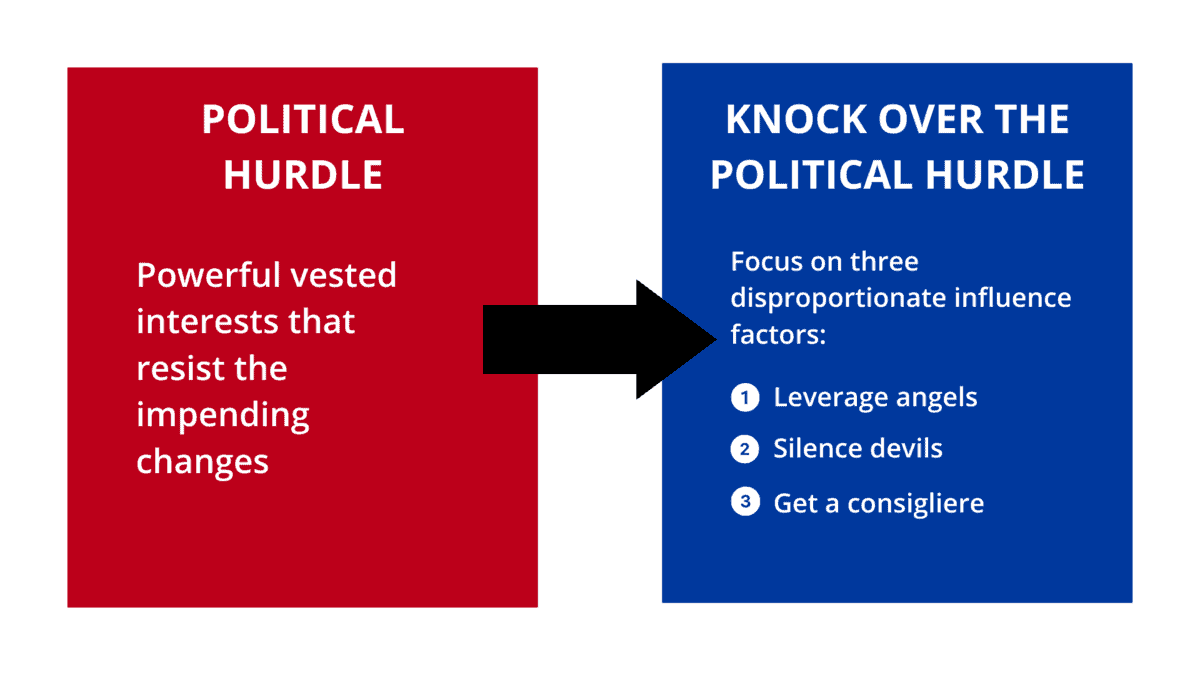
Leverage your angels and silence your devils
To knock down the political hurdles, you should also ask yourself two sets of questions:
- Who are my devils? Who will fight me? Who will lose the most by the future blue ocean strategy?
- Who are my angels? Who will naturally align with me? Who will gain the most by the strategic shift?
Don’t fight alone. Get the higher and wider voice to fight with you. Identify your detractors and supporters – forget the middle – and strive to create a win-win outcome for both. But move quickly. Isolate your detractors by building a broader coalition with your angels before a battle begins. In this way, you will discourage the war before it has a chance to start or gain steam.
Do you have a consigliere – a highly respected insider – in your top management team, or only a CFO and other functional heads? Do you know who will fight you and who will align with the new strategy? Have you built coalitions with natural allies to encircle dissidents? Do you have your consigliere remove the biggest land mines so that you don’t have to focus on changing those who cannot and will not change?
Overcoming organizational hurdles a key to successful strategy execution
It is never easy to execute a strategic shift and doing it fast with limited resources is even more difficult. However, by consciously addressing the four organizational hurdles to strategy execution and focusing on factors of disproportionate influence, you too can knock them over to actualize a strategic shift. Don’t follow conventional wisdom. Not every challenge requires proportionate action. Focus on acts of disproportionate influence. This is a critical leadership component for making blue ocean strategy happen by aligning employees’ actions with the new strategy.
To learn more about overcoming key organizational hurdles to strategy execution with examples, read the Blue Ocean Strategy book.

